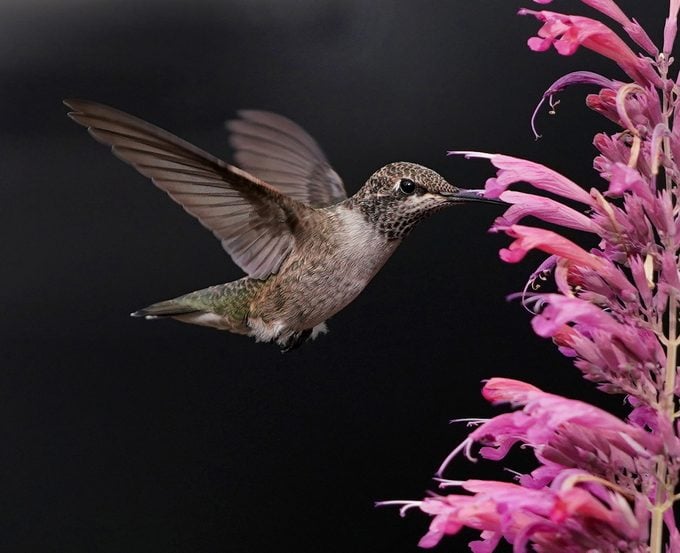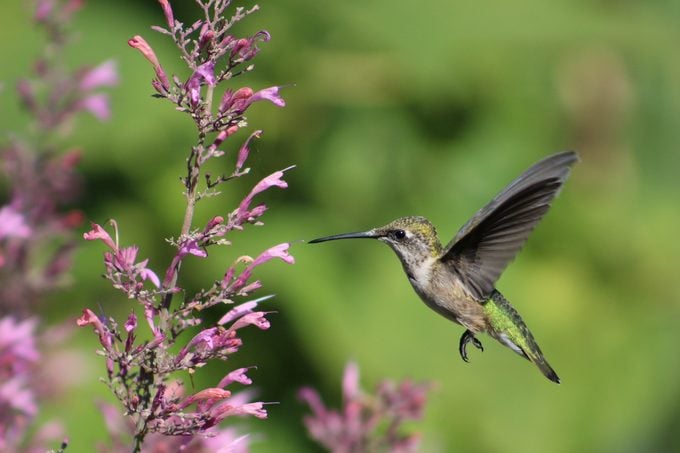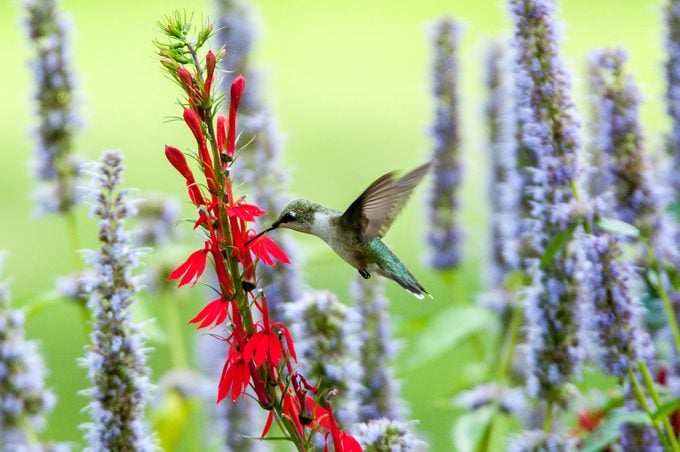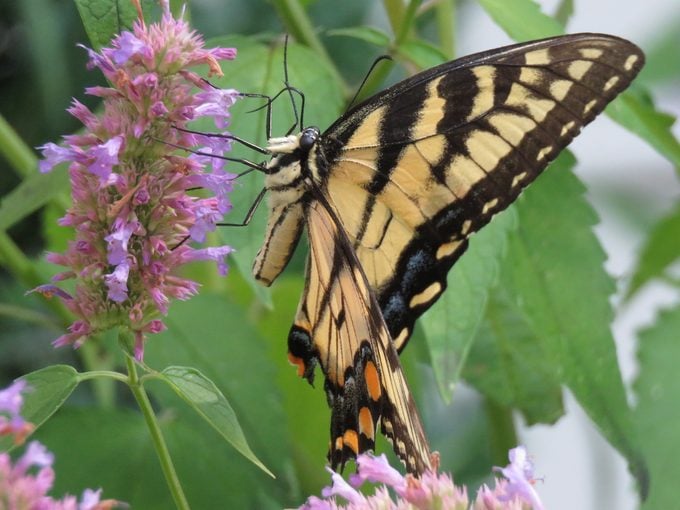Hummingbirds Will Flock to a Hummingbird Mint Plant
Updated: Mar. 22, 2022
Want an easy way to attract hummingbirds to your garden? Grow a hummingbird mint plant! Pollinators can't resist these colorful tube-shaped flowers.
Our editors and experts handpick every product we feature. We may earn a commission from your purchases.
How to Grow a Hummingbird Mint Plant

- Common name: Hummingbird mint
- Agastache spp.
- Zones 4 to 11
- Size: 1 to 5 feet tall
- Full sun
- Attracts: hummingbirds, bees and butterflies
Planning your butterfly and hummingbird garden? Be sure to include some agastache. It’s no coincidence that a common name for agastache species is hummingbird mint. Hummingbirds visit the flower spikes in droves. Hummingbird mint is drought tolerant and thrives in well-draining moist to dry soils, where it grows up to 5 feet tall.
Agastache is native to North America, and no matter where you live in the U.S., you’re likely to find at least one species that will work for you. These members of the mint family are guaranteed to be magnets for hummingbirds and butterflies of all kinds. They require little care once you plant them in the right place.

Tiny tubular flowers on slender stalks grow in a variety of colors and shapes. Full sun and excellent drainage are essential for keeping plants happy. Agastache is in the same family as catnip, however, deer and rabbits leave it alone.
Check out the top 10 hummingbird plants that grow in shade.
Hummingbirds Love Hummingbird Mint

Bushy and studded with violet, orange, yellow, pink or blue flower spires from mid- to late summer, agastache is a favorite of hummingbirds, butterflies and bees. Hummingbirds register the color red very well, which is why they are drawn to bright red flowers. But hummingbirds are just as likely to visit purple blooms (and other colors) as long as they’re vibrant, tube-shaped and easily accessible.
“I took this photo of a female ruby-throated hummingbird (above) as it was sipping nectar from a cardinal flower in the perennial garden just behind our kitchen. I selected this photo for its clarity and attractive background of Blue Fortune anise hyssop, which also attracts hummingbirds,” says Sam Kulp.
Anise hyssop (Agastache foeniculum), a North American native plant, produces spikes of flowers in late summer. This wildflower releases a sweet licorice fragrance when you brush against the leaves. You’ll want to give this 2- to 4-foot plant plenty of room to spread because it readily reseeds. This species has a wide native range, covering much of the north central U.S., and is capable of growing nearly anywhere in the country. It thrives in northern, wetter climates. In warmer climates, grow it in the cool season.
Hummingbird Mint Varieties for Your Garden
Blue Fortune anise hyssop (zones 3 to 8) is a multipurpose perennial that checks all the boxes. It’s pest resistant and drought tolerant, and it flowers for months, producing clouds of pale lavender blooms. Pair it with rudbeckia or purple coneflower for an impressive late summer display of sturdy, upright blooms that continues well into fall. Its edible leaves and flowers have the fragrance and flavor of black licorice. Steep them for an aromatic cup of tea, or add them to salads and smoothies. This plant is a magnet for late season bumblebees, butterflies and other pollinators.
Gardeners in zones 6 to 9 should look for Peachie Keen anise hyssop. This brightly hued bloomer is loaded with apricot-peach flowers paired with purplish pink calyx—magnets for hummingbirds, bees and butterflies. This perennial is 2 feet tall and is often grown as an annual in colder climates. Peachie Keen has a more refined shape than other types of agastache.
Mexican giant hyssop (Agastache mexicana) is native to central Mexico. A series called ‘Acapulco’ hit the market in recent years that does well in warmer regions, including those with humid summers. Grow it as an annual in cooler climates.
Licorice mint / sunset hyssop (Agastache rupestris) is native to the hot dry regions of Arizona and New Mexico. It thrives in dry, nutrient-poor sandy soil. It will suffer in wet and humid conditions or heavy clay soil. A similar species, orange hummingbird mint (A. aurantiaca), can handle slightly wetter conditions.
Texas hummingbird mint (Agastache cana) – This native of Texas has another feature to keep in mind; some say the foliage of this plant repels mosquitoes. The crushed leaves have a minty bubblegum fragrance. Grow it in well-drained soil with regular water.
Butterflies Also Visit Agastache Plants

Butterflies also frequently indulge on hummingbird mint. “I usually take a photo of the backside of the tiger swallowtail because of the striking colors, but this photo caught my eye because of all of the details on the body. The swallowtails seem to really like the agastache I planted,” says Jackie Besser.
Next, don’t miss more long-blooming flowers for attracting butterflies and hummingbirds.
